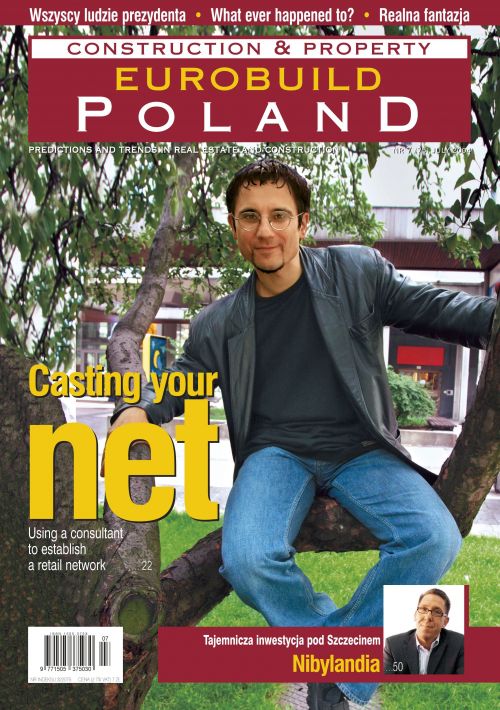Genius loci
It is no secret that there are only three key rules in property investment: location, location and location. Thomas Löffler, managing director of Geni Polska, who evaluates the attractiveness of locations for development as shopping centres and retail parks, agrees with this statement, but not entirely. He believes, "There are two kinds of location: those with potential, and those without. The success of a developer's project depends, by between 70 and 80 percent, on its location, the remainder on other factors. Even the positive features of the best site can be squandered by putting up the wrong type of outlet." And he guarantees that, by employing his company's services, such risks can be minimised.
Database
Geni uses an impressive looking database of information about consumers in Poland that has been painstakingly processed from data acquired from the Central Office of Statistics, Ministry of Internal Affairs and Administration, commune authorities, market analysis companies and Geni's own research. It could be used to answer such questions as; How many women between 30 and 35 with secondary education live within 5 kilometres from the Morena shopping centre in Gdansk with its Carrefour hypermarket? Or - how many such people live a similar distance from all Carrefour hypermarkets in Poland? Also - how much does a typical resident of Janki (a Warsaw suburb) spend in local shopping centres? Who could require such data? Developers who want to know whether it is worthwhile constructing new centres or perhaps retailers who want to know in which street or mall they should open a new shop.
Supporting analyses
Geni customers are developers (Metro Real Estate, TK Development, Parkridge), shopping centre managers (Apsys), operators of large surface retailers (Ahold, Auchan) and catering chains. However, those that we spoke to claimed that reports drafted by outside firms can only supplement their own research, not replace it. Karol Kalicki, board member of Polimeni International, a developer, says, "When studying locations for our investments we consider classical factors such as the purchasing potential of the region's population, access to a site and its visibility from transport routes. We always combine theoretical research with the practical views of tenants who we always consult before beginning the development process." He admits, "I feel that it is mainly developers who plump for this type of analysis. Tenants, particularly those with extensive experience like the hypermarkets, mainly use their own research."
Catchment area calculations
Developers and agents often use criteria such as "catchment area" to value existing or new retail properties. They suggest the size of an area from which a retailer could attract customers, i.e. how many potential clients there are and where they will come from? But Mr Löffler believes that this method does not indicate with satisfactory accuracy what influence the shopping centre will exert. He suggests that just because a customer lives within a five-minute drive from a given shopping centre does not mean he is going to become its customer. He goes on, "Three similar shopping centres could operate a similar distance away. However, living near it does not mean that we will like it sufficiently to shop there. That is why Geni created a special indicator called "weighted catchment area" which calculates the number of consumers for whom a specific shop is the most frequently visited, the second most frequently visited, and so on. Should a consumer have access to three similar centres, he will be counted, in effect, as one third of a person when working out the "catchment area" of each centre. Anna Szmeja-Kroplewska of Apsys Polska has a positive opinion. "This is an exceptional method which is not restricted to drawing a map of successive circles around shopping centres but displays the real potential of a given district." Her company received such a report about the Janki centre, which it manages.
A shallow market
Karol Kalicki of Polimeni International thinks that the market for this type of consultancy service in Poland is not large and that most of the firms offering it do not just concentrate on the real estate sector. Artur Mikołajko, president of the Kraków-based Centrum Sportu Maks, Poland's largest chain of sports retail outlets, backs up this view and adds that although he receives proposals fairly regularly, it is independent analysts who call him most often. "We have not made use of their services up to now since we know perfectly well what locations we require. Developers flood us with lease proposals, studiously informing us of their property's financial results and popularity" he smiles.





















































